Product manufacturers generally have refined processes for how they develop their products.
These processes have been crafted, adjusted and maintained over a number of years so that what gets shipped to retail outlets is of the highest possible quality and standard.
In the same vein, consumers are mostly on the lookout for items that carry a lot of mileage with them.
You know what I mean, right?
Just imagine going to your favourite soccer gear store to look for the best soccer ball available.
Without a doubt, you’re going to consider the way in which each soccer ball has been constructed.
This is because such an evaluation will likely provide you with an indication of expected longevity for the soccer ball that you end up choosing to buy.
However, not every person possesses the necessary discernment to be able to differentiate between a well-made soccer ball and one that’s been mish-mashed together.
And that’s why the following question is quite commonly asked:
Which soccer ball is better: hand-stitched or machine-stitched?
I’m going to cut right to the chase and answer this for you, right away.
A hand-stitched soccer ball will outperform a machine-stitched one when it comes to durability, primarily because the former method of construction allows for the seams to be hidden much deeper within the outer spherical structure, where the stitches are less exposed to the external impacts that bring about excessive stretches and tears that damage the stitching integrity.

Want to test your knowledge on soccer ball care?
Take the quiz by clicking the button below and see just how informed you truly are!
Note - You'll need to enter your email address to see the final results.


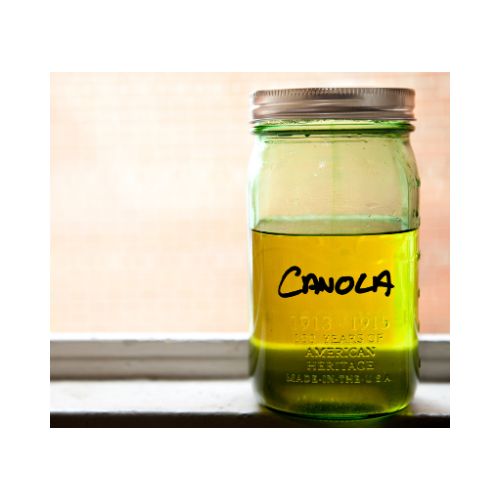
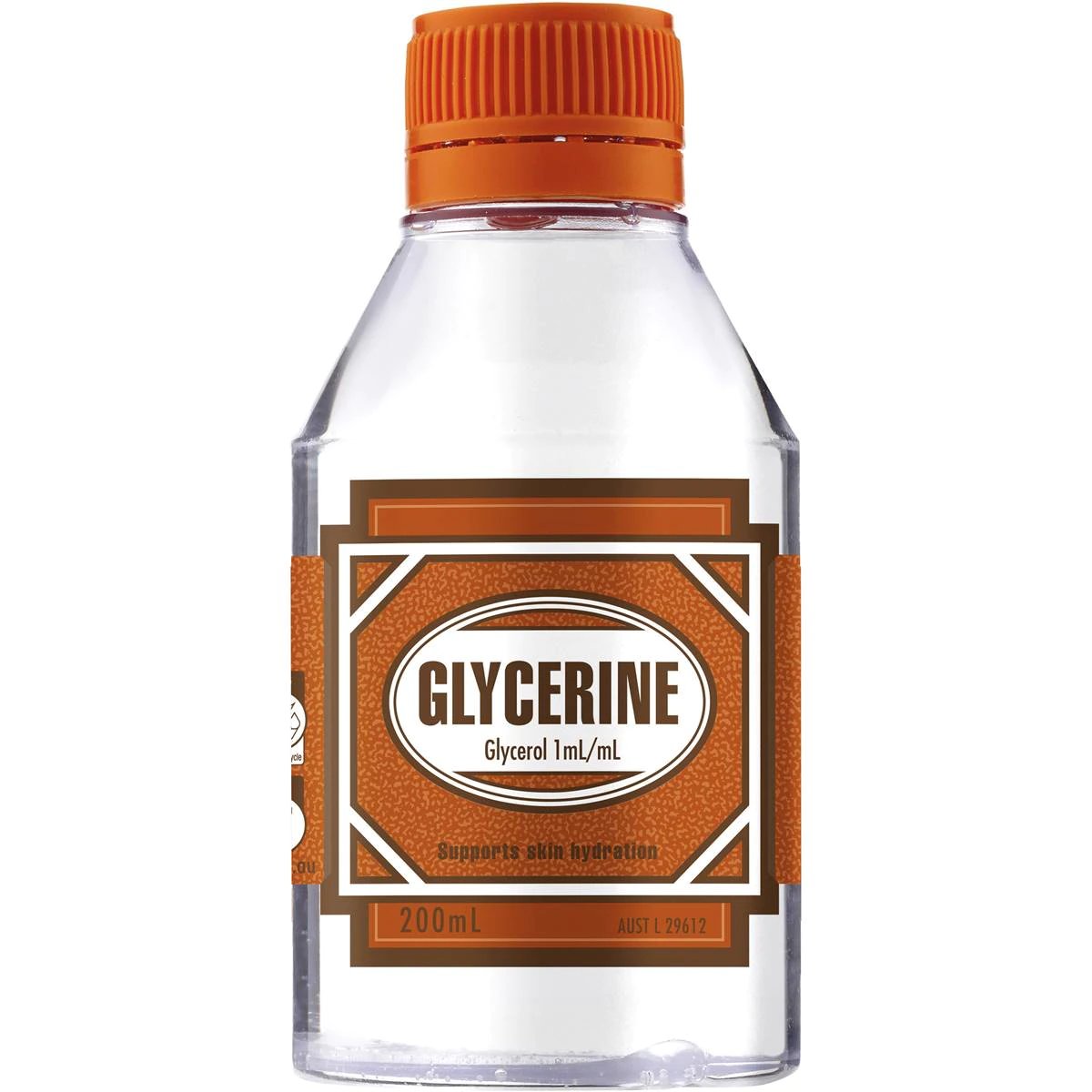





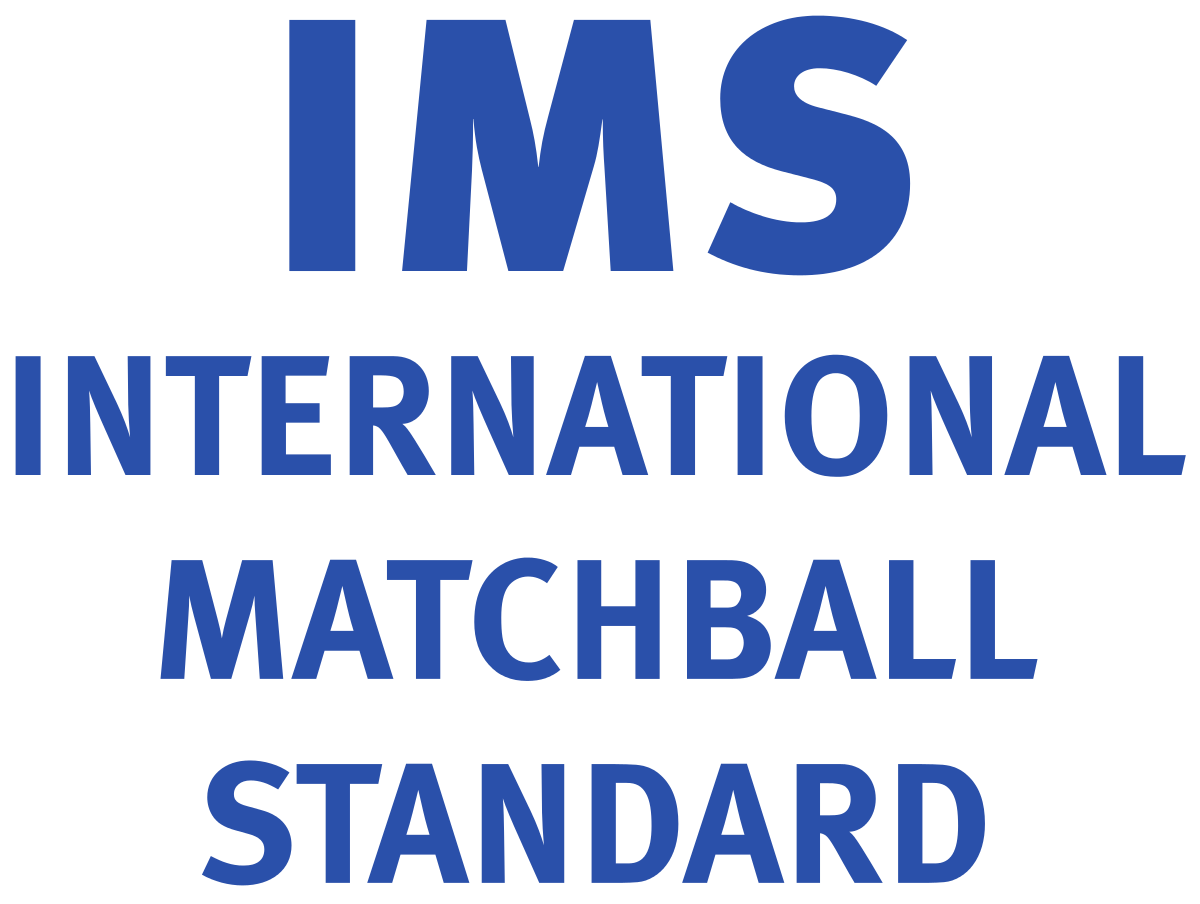

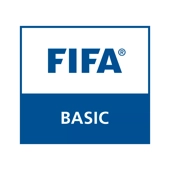

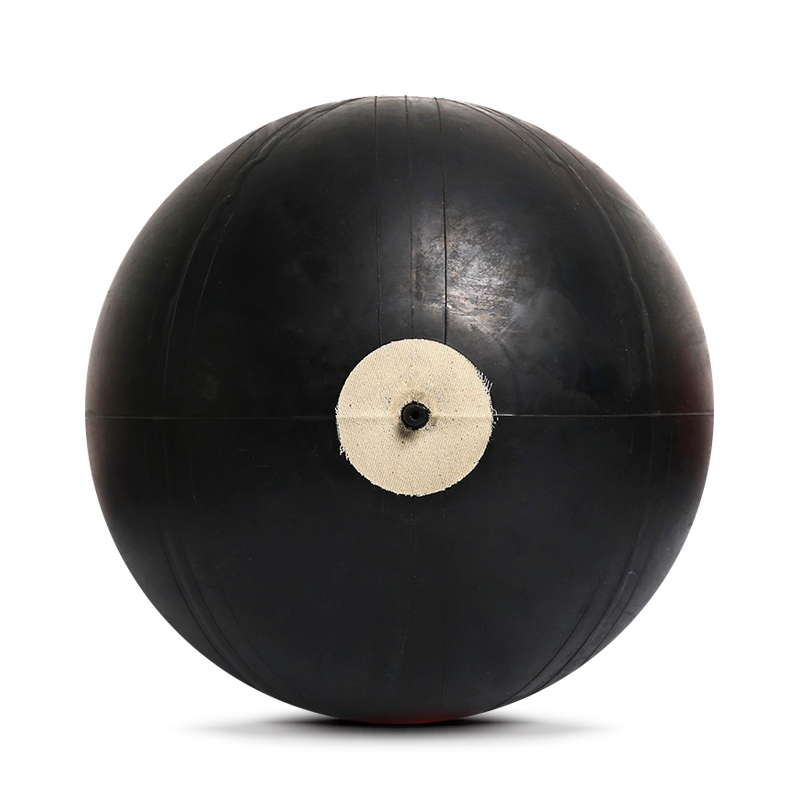
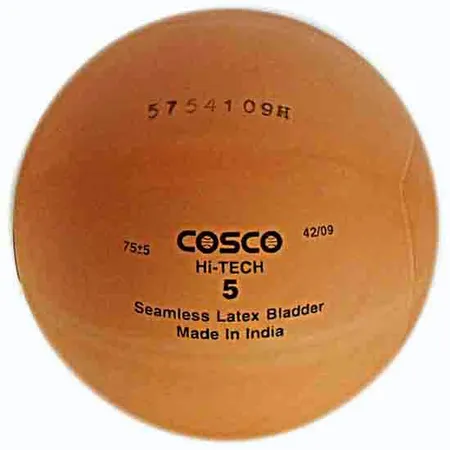

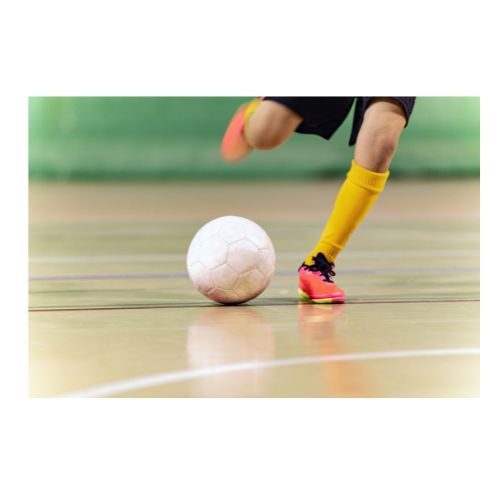







To understand why this is the case, you’re going to have to read on.
It’s only after I’ve explained each type of stitching that you’ll gain a better appreciation and insight into why hand-stitched soccer balls last longer than their machine-stitched counterparts.
So, with that said, let’s get started.
What is a hand-stitched soccer ball?
A hand-stitched soccer ball is one whose panels have been sewn together by the hands of a human being.
It really is that simple.
Hand-stitching remains the most traditional method for creating a spherically shaped soccer ball, as the precision of panel placement and alignment that a skilled labourer is able to achieve using their hands is very high.
Back when this approach to making soccer balls was relatively new, thick polyester thread was the material of choice used to hold the panels together.
Nowadays, polyester or threading of a similar nature – such as nylon-waxed cord – can be used.
Here’s a closeup of a hand-stitched ball for you to see:
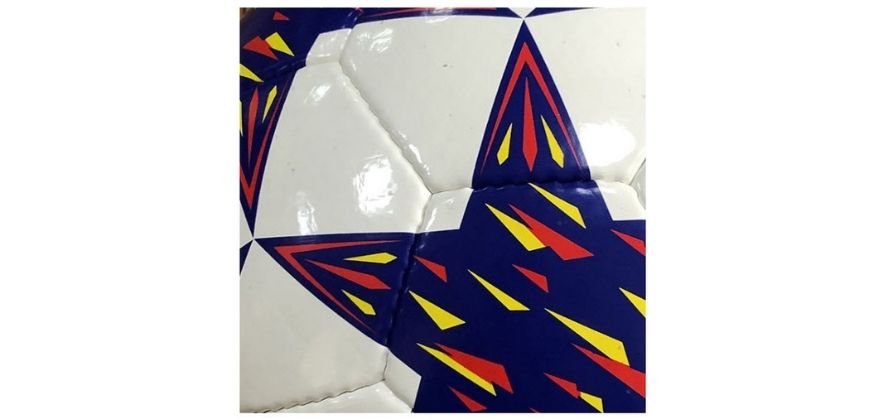
Notice how the stitches are hidden, as there’s not a single piece of threading visible on the entire ball circumference.
This is because as the stitching is completed, the sewer turns the ball inside out and works their way around it by individually sewing all the panels by hand, which ensures that none of the stitches show on the outer surface of the ball.
Check out this video which illustrates the soccer ball sewing process from start to finish:
The benefit that that this process gives is that the seams can be tucked in deeper, which protects the stitches away from the outer surface where they are more prone to catching on to something that could potentially stretch or tear them.
But even with all the positives that wear-resistance brings, hand-stitched soccer balls cannot achieve water resistance.
If you try submerging a soccer ball in water for a long enough time or choose to play soccer in the rain, your ball will get waterlogged.
Another drawback lies in the fact that hand-stitched soccer balls take a considerable amount of time to produce, as they are subject to the speed at which humans can sew.
Many companies like Nike and Adidas usually outsource this process to factories in Pakistan, because labour costs are much more affordable there.
Have a look at my article on where soccer balls are made if you want to learn more about this.
What is a machine-stitched soccer ball?
Machine-stitched soccer balls are soccer balls that are made with mechanical input.
What happens here is that the panels are combined together using a sewing machine and micro-stitches. It is a much faster production method than hand-stitching, and it works at a fraction of the cost that would be required to employ a labourer to stitch by hand.
So, that’s why you’ll find that most of the cheaper soccer balls are of lower quality than the higher priced ones, as the cost of production is usually carried over to the final consumer with a bit of business mark-up on top.
Take a look at my post on how much a soccer ball costs to find out the exact dollar ballpark that I’m talking about.
But even with the benefits of speedier and cheaper production, machine-stitched soccer balls do have a few pitfalls.
Firstly, the seams are exposed because they aren’t lined up deep enough within the ball structure.
That means soccer balls of this type are more prone to having stitches stretch and tear.
Here’s how a machine-stitched ball looks like up close:
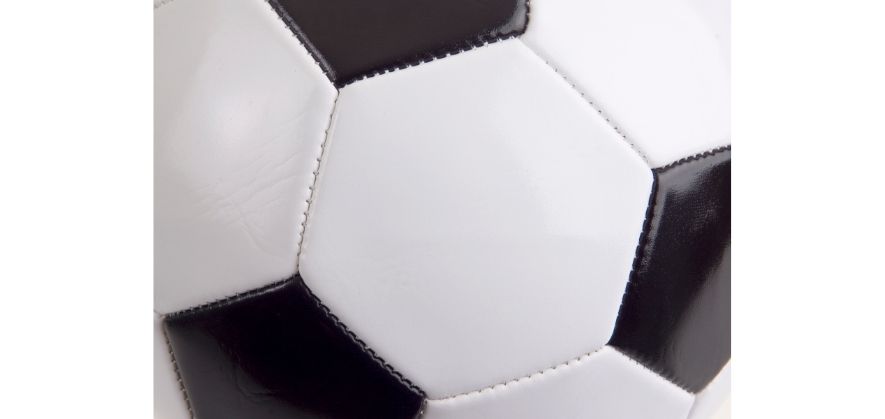
In addition to this, they don’t provide waterproofing because of the exposed seams, so they are bound to get much heavier – through water absorption – when used on wet playing surfaces.
Thermally bonded soccer balls vs stitched ones
Before I give the verdict in the next section, it’s important that you’re made aware of a third player that exists in the soccer ball production process.
This is thermal bonding – or what’s alternatively referred to as a moulded/glued soccer ball.
With this method, the panels are welded together using heat.
Here, each panel is placed inside a sort of mould and then that mould is heated up at high temperature by a machine which presses and glues those panels together.
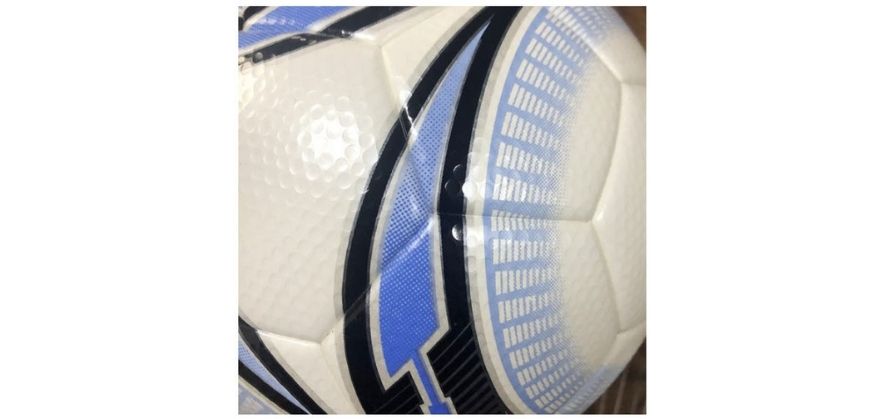
Soccer balls made using this production method boast greater shape retention due to the fact that the panels are glued in place as opposed to being connected by pieces of threading which give a little bit of leeway for vertical and horizontal movement.
Another advantage is that thermally bonded balls are water resistant, because the seamlessness of the surface really minimises the amount of water uptake that occurs when the ball rolls along a wet surface.
But thermally bonded balls don’t escape when it comes to disadvantages.
You’re probably aware that some soccer balls are shipped in a deflated state which helps to reduce warehouse storage and shipping costs.
Well, thermally bonded soccer balls can’t be delivered in such a form which makes the cost of their delivery higher than other balls that are machine- or hand-stitched.
More so, if quality isn’t a priority for the manufacturer, they may compromise on the process by which the machine presses the panels and heats them into a mould, which can lead to these panels peeling off further down the product life cycle.
Which soccer ball is better: moulded or stitched?
Ultimately, if price is no barrier, then a thermally bonded soccer ball would be my choice.
This is because the moulding method has the edge when it comes to durability and overall performance.
I’d want my soccer ball to last for a very long time, whilst also offering maximum enjoyment when I play different games with it because of better aerodynamic stability and responsiveness when it comes to ball control and bouncing off of surfaces.
Which stitching type is best for a soccer ball?
On the topic of hand-stitching versus machine stitching, the winner is also quite clear cut.
You appreciate the craftsmanship of a soccer ball that was made by hand a lot more, and you also know that a lot more care and precision went into stitching placement that a sewing machine cannot specifically cater to.
Despite the steeper price point that hand-stitched soccer balls bring, you have the assurance that they will last longer because the seams are hidden away which minimises the possibilities of the stitches loosening or tearing during play.
So, if you’re in the market for a soccer ball, I would highly recommend that you go for a hand-stitched one over a machine-built one.
Finally, before you go, you should check out our eBook on Soccer Ball Care.
Within this monster of a resource, we tackle all there is to know about looking after a soccer ball and maximising its useful life right from when you purchase this type of product.
This eBook covers a plethora of different topics, such as:
- soccer ball construction;
- inflation and pressure management;
- cleaning and maintenance;
- soccer ball storage; and
- how to extend the useful life of your ball
In just a couple of hours, you’ll have more knowledge on what is good and bad for your soccer ball than you could ever fathom!
You’ll learn how to inflate your soccer ball to the correct level of air pressure based on the size of ball you have, as well as know how to clean and store your soccer ball properly after games.
But I don’t think there’s anything better than being able to effectively troubleshoot problems with your soccer ball and fix them yourself!
So, you can finally take care of your soccer ball for many months to come, which without a doubt will save you time and money as won’t be searching for and buying a replacement any time soon.
With just one click…
Grab yourself a copy right now for only $29!
If you enjoy the content that I create and would like to buy me a coffee, then I’d really appreciate it!
Any money that I earn through this donation will be re-invested into more content for this website.
Additionally, by sending in a donation you’ll also receive a copy of my recently released 190+ page eBook on Soccer Ball Care, as well as be subscribed to our mailing list where you’ll be regularly informed on the latest developments concerning the Soccer Whizz blog.
- Future Icons: Europe’s Emerging Midfield Maestros Set for Glory - December 4, 2023
- Kickstarting a Revolution: How Soccer Transformed the United States Over the Last Four Years - October 7, 2023
- 4-1-4-1 Soccer Formation [Analysis] - September 23, 2023


